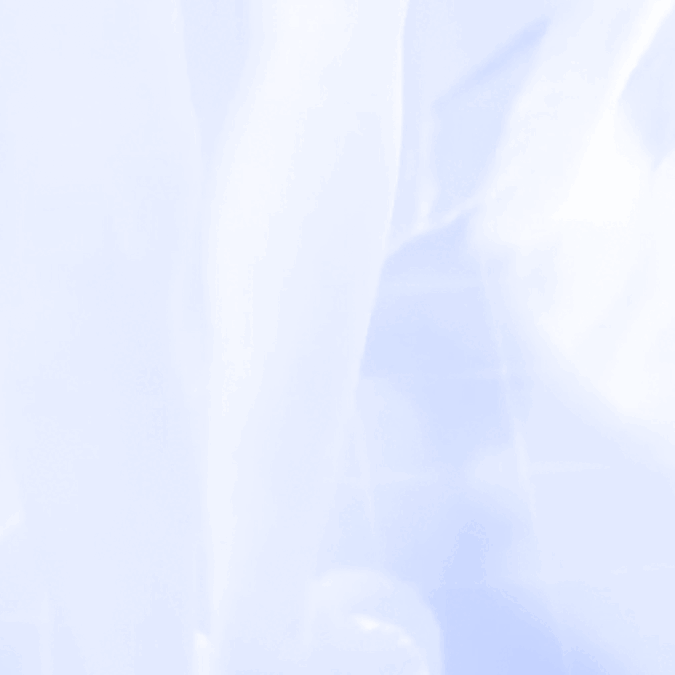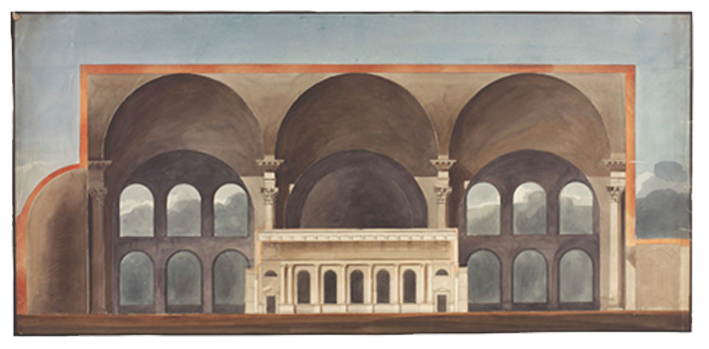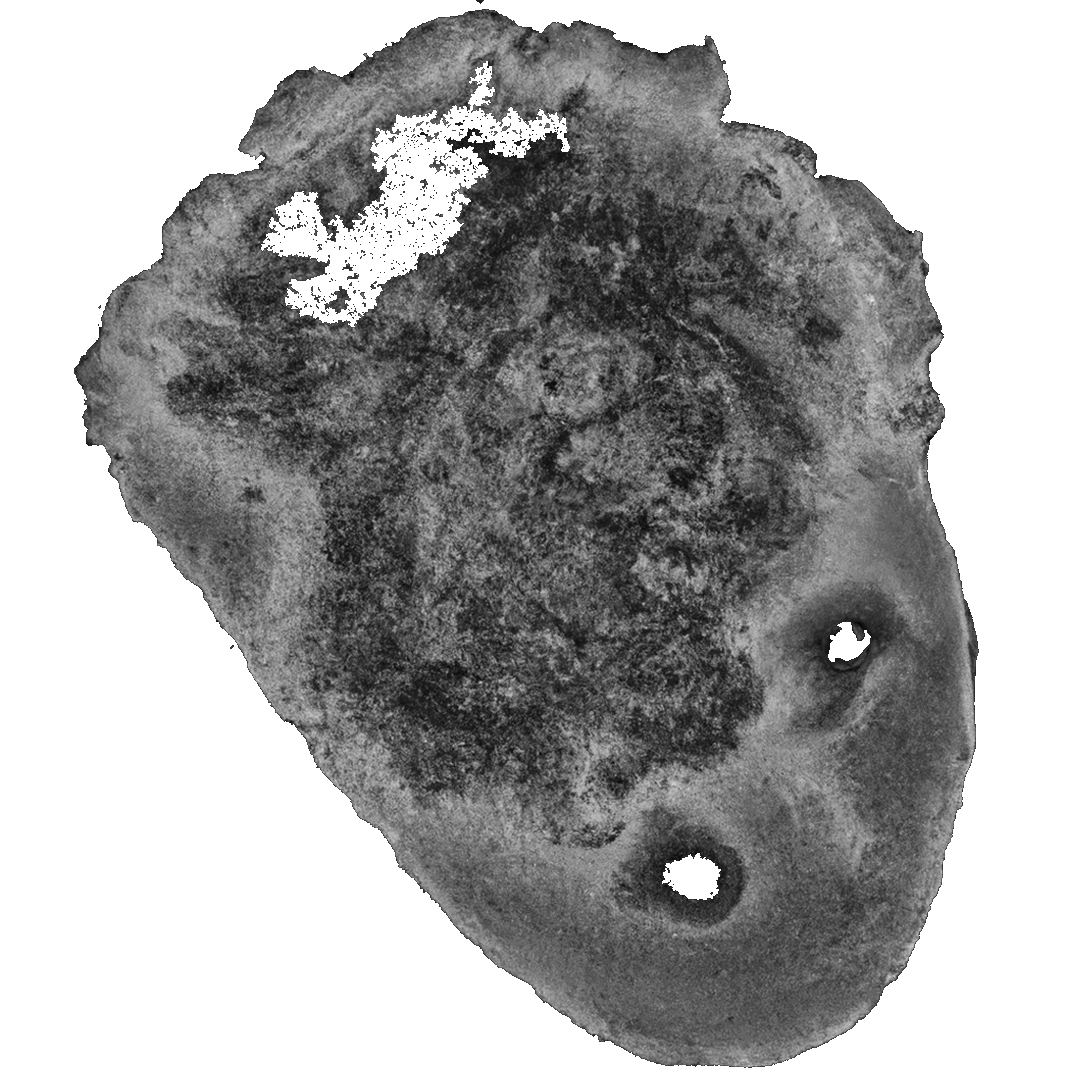
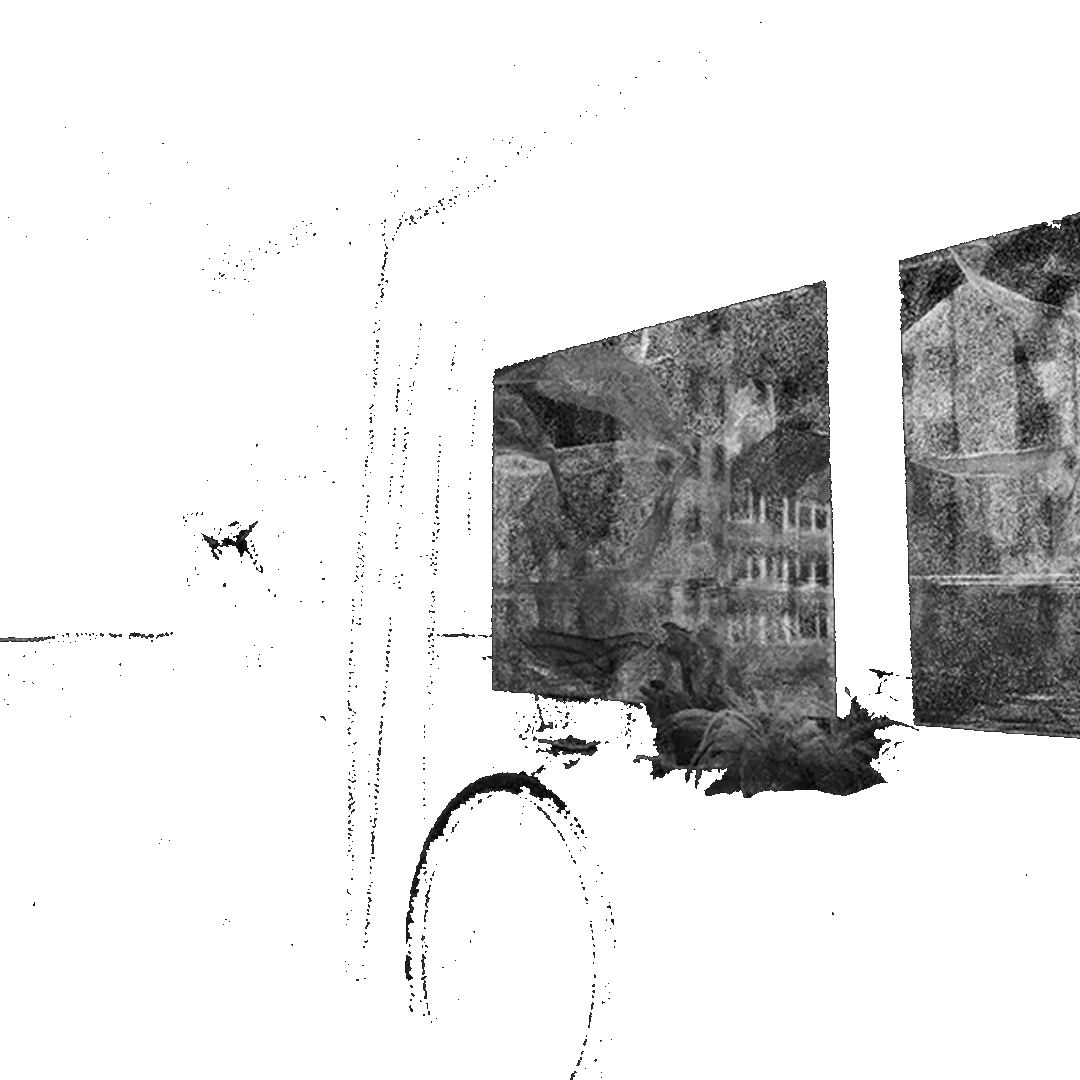

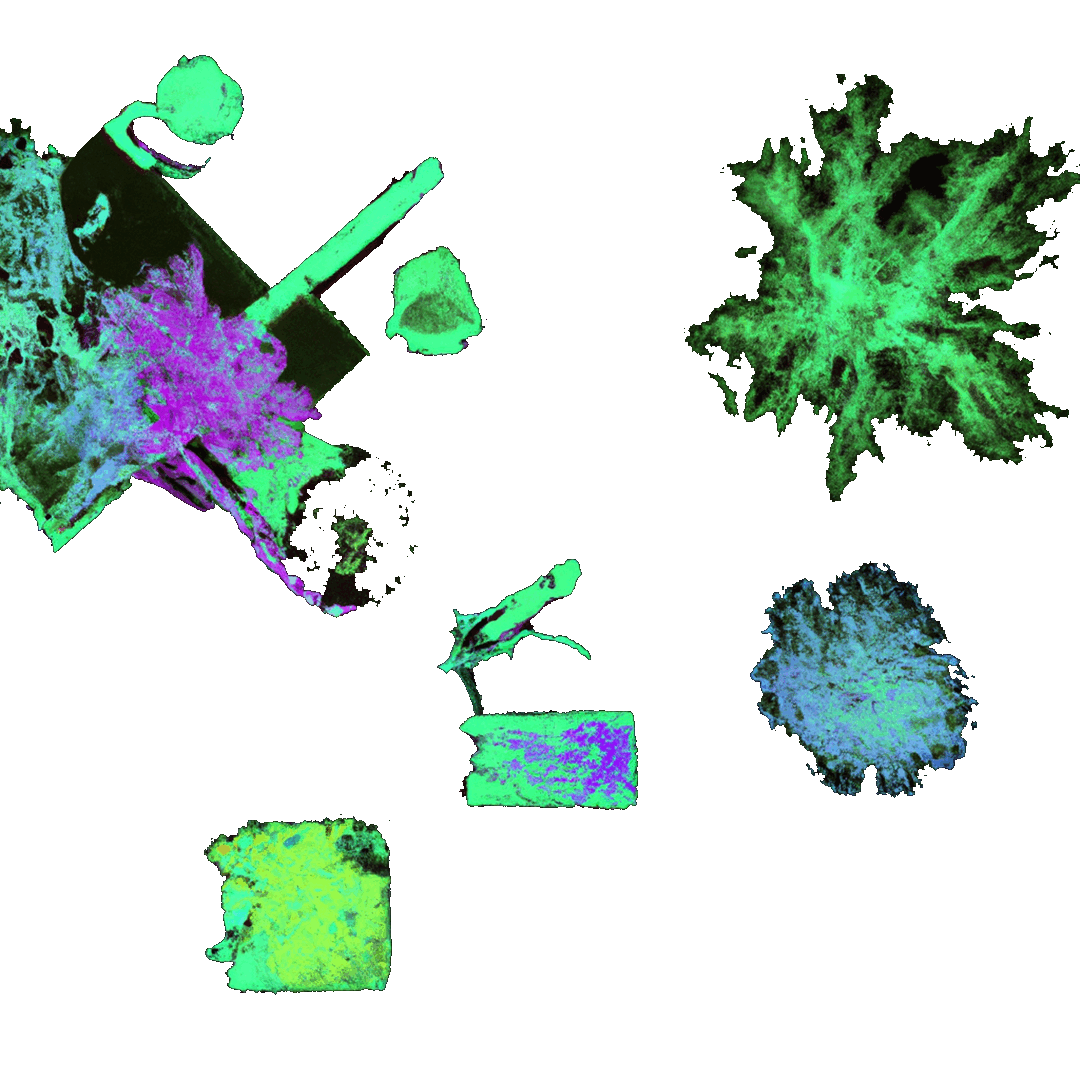
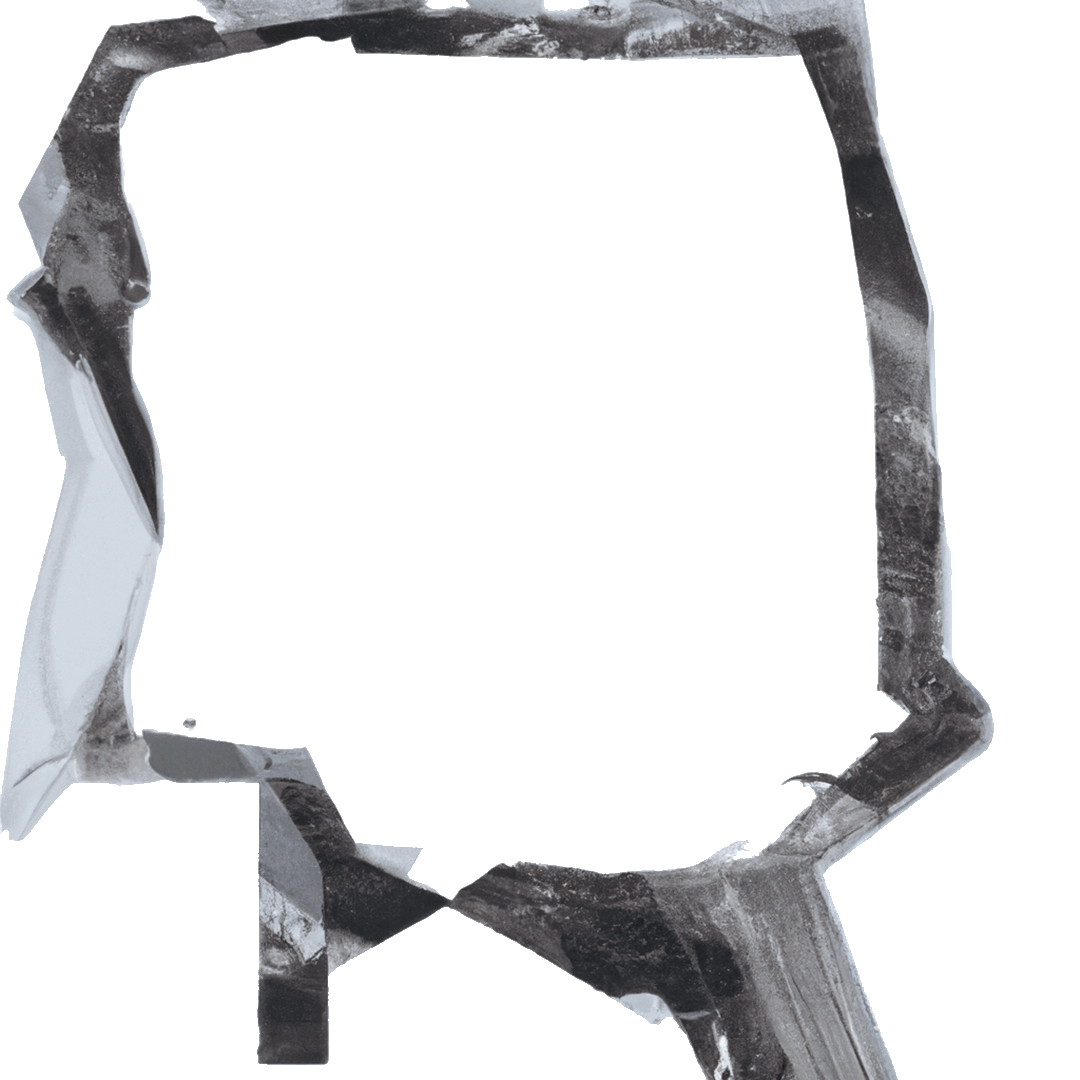
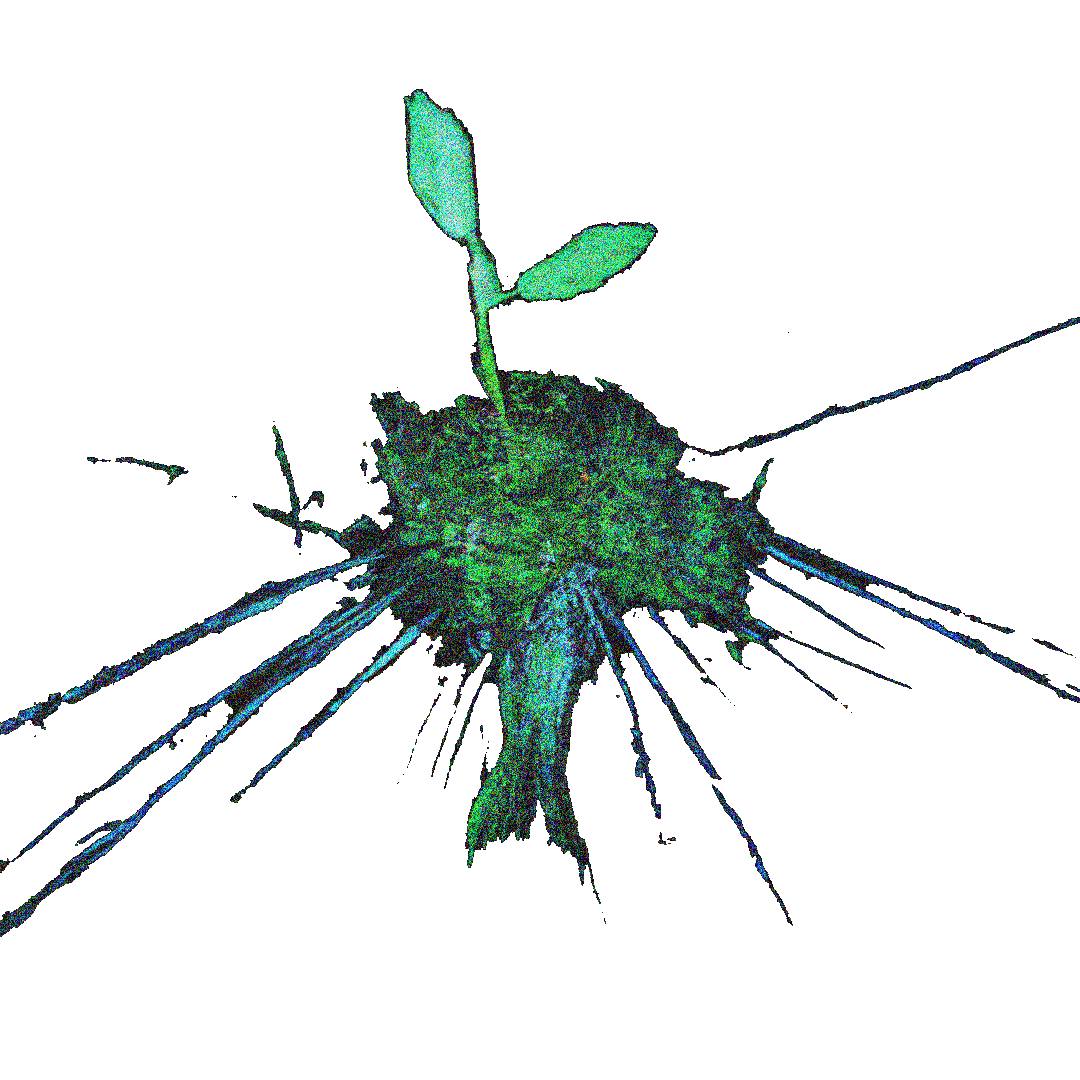
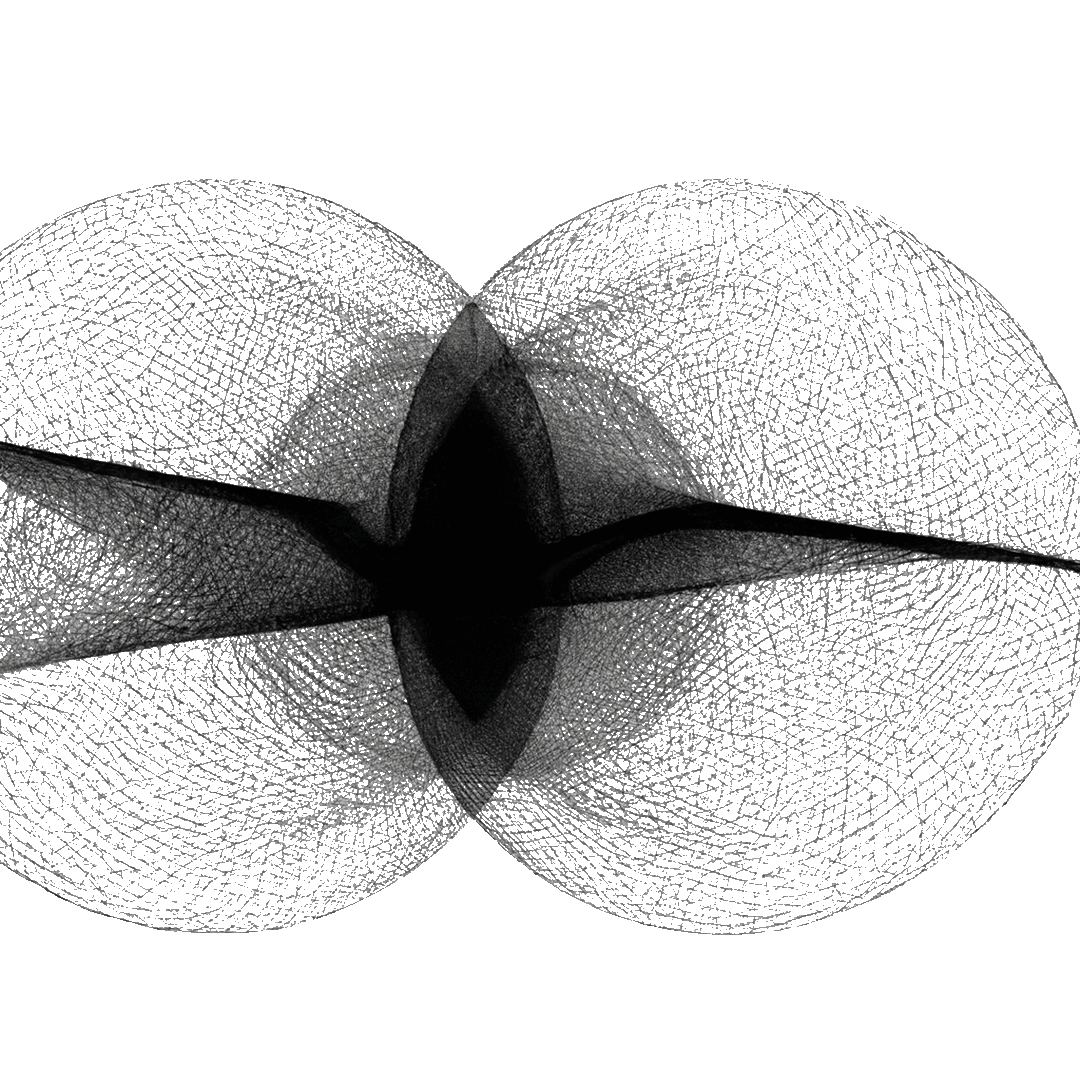


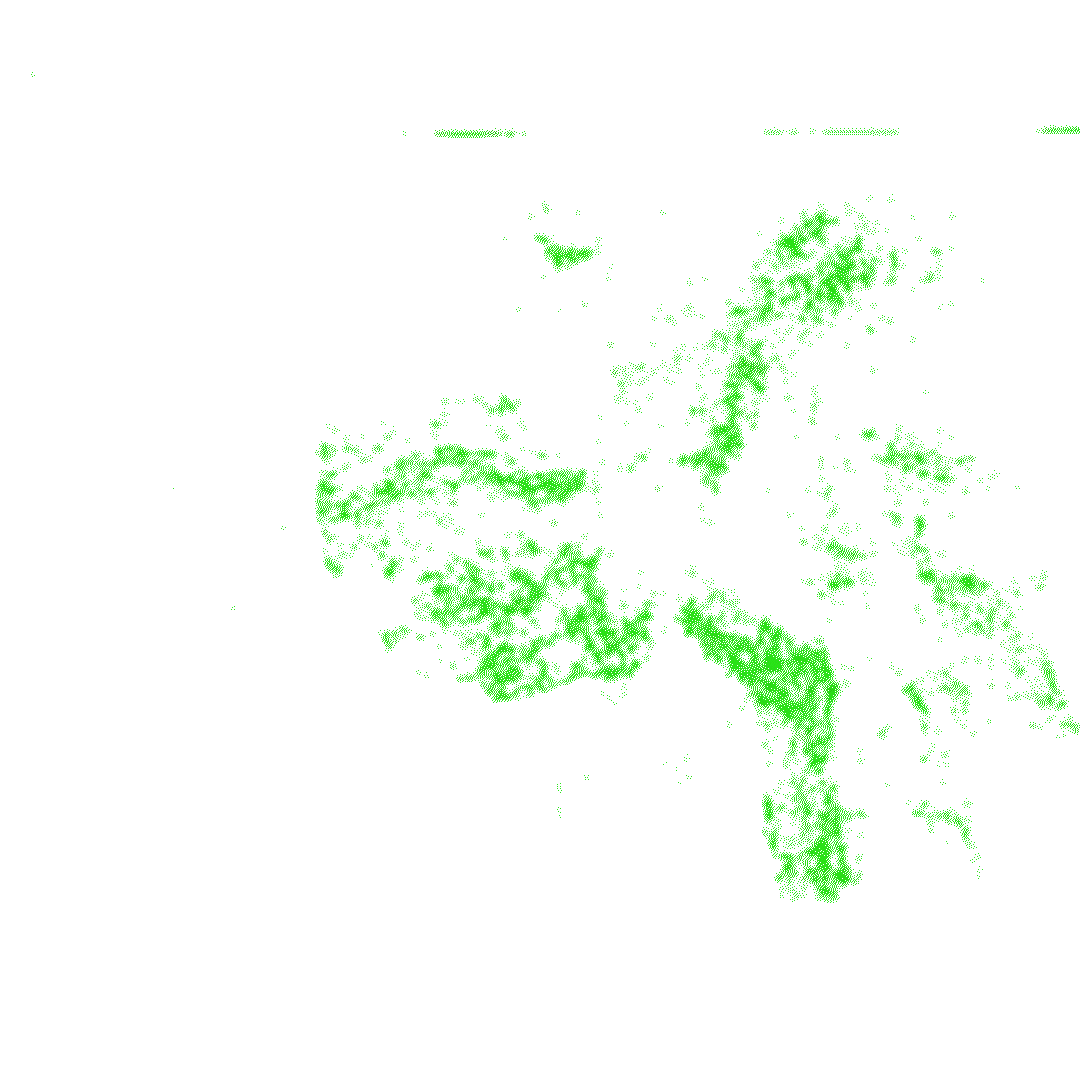
**house 01(under-way)

**house 02
(under-way)


(chapter one)overlapping planes
Overlapping planes implies a dense organization pattern in a frame of reference. Such a criteria would demand a deeper level of scrutiny. In a frame of representation, like an artwork, painting, photograph, or a subjective viewpoint framing the frontal of an architecture building, when two or more elements in the reference plane are seen to be overlapping, in theory each of them has to claim the spatial existence of the overlapping part as if it belongs to one. The articulation of such a space is dealt in two contradictory ways; on one hand, raising a question about the evident optical quality of this frontal element causing an overlap, or on the other hand, the observer making a reading of these overlaps preconceives a notion of an elongated space in the background of the frontal overlap. In the first case, the optical quality may refer to the rational materiality of the element, for instance a translucent material while in the second case, it is the existence of a spatial dimension overshadowed by the overlap, regardless of the translucent materiality. However, the initial claim of transparency observed is mostly a visual feature and a more direct one. The latter case would require much more determined investigation about the formal organization of the reference planes. Colin Rowe and Robert Slutzky in their definition of transparency classifies and that, “Transparency may be an inherent quality of substance, as in a glass curtain wall; or it may be an inherent quality of organization. One can, for this reason, distinguish between a literal and a phenomenal transparency.”5
Transparency implies contraction of space and suppression of depth. Similar characteristics can be found in cubist paintings. Although after several readings one may be perplexed to find both the cases of transparency in Georges Braque’s Man with a Guitar and Pablo Picasso’s Man with a Violin. ![]() Just upon initial reading, both of them would be equally qualified to be a case for literal transparency. A basic reading of both the paintings assumes a presence of a triangular form in background. It is at this point after perceiving the triangular form, one presumes the presence of a middle-ground within the same frame of representation. Notice the rectangular planes on either end of the canvas, almost dissolved with the background, the grid lines fading out at the intersection of those planes suggesting the transparent materiality of the overlapping plane as if the corner of the canvas were painted in translucent glass. At this point in observation both the paintings could easily be classified under literal transparency.
Just upon initial reading, both of them would be equally qualified to be a case for literal transparency. A basic reading of both the paintings assumes a presence of a triangular form in background. It is at this point after perceiving the triangular form, one presumes the presence of a middle-ground within the same frame of representation. Notice the rectangular planes on either end of the canvas, almost dissolved with the background, the grid lines fading out at the intersection of those planes suggesting the transparent materiality of the overlapping plane as if the corner of the canvas were painted in translucent glass. At this point in observation both the paintings could easily be classified under literal transparency. Upon more elaborate reading of Picasso, the form is overlapped by the addition of orthogonal grid lines. The formation of rectangular planes in between the grid lines cannot be unseen because of the color contrast and dark contour. ![]() These rectangular planes find a place somewhere in the deep space.
These rectangular planes find a place somewhere in the deep space. Braque’s reading of the triangular form is more tedious, he achieves this ambiguity by the addition of relatively smaller triangular planes and angular grid lines interlacing in parts to form a shallow space. Braque’s space gradually lets the observer invest himself within and once the shallow depth is realized it becomes clear of the optical quality, presence of a transparent layer before the primary form is evident. ![]() Arguable, Man with a Violin could be a better example of phenomenal transparency while Man with a Guitar could be literal.
Arguable, Man with a Violin could be a better example of phenomenal transparency while Man with a Guitar could be literal.
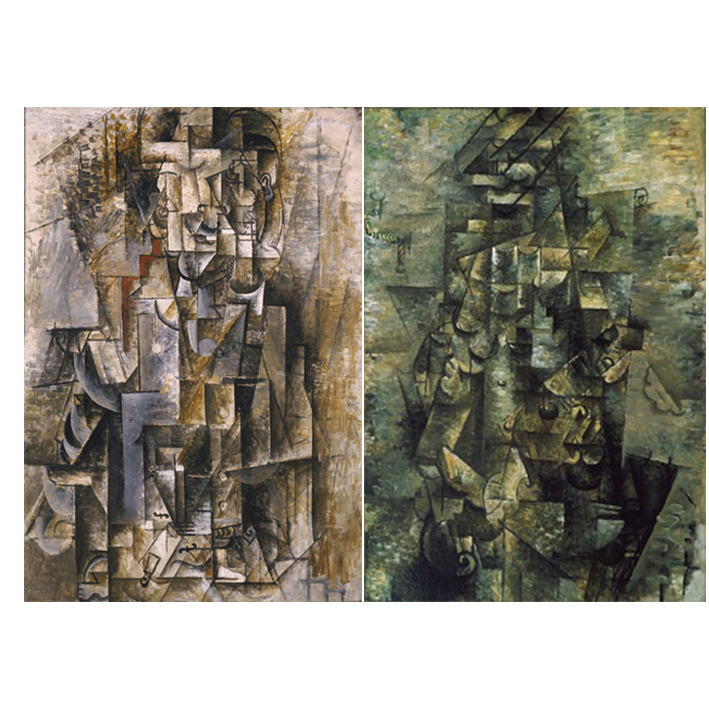


In architecture, the idea of overlapping planes resulting in suppression of depth is hugely a result of a subjective viewpoint. The frontality of a ‘form’ presupposes a notion of a deeper space in the background. This is hugely because of the three dimensionality of architecture spaces resulting in the implication of reading phenomenal transparency. “In considering architectural rather than pictorial transparencies, inevitable confusions arise; for while painting can only imply the third dimension, architecture cannot suppress it. Provided with the reality rather than the counterfeit of three dimensions, in architecture literal transparency can become a physical fact.”6 Considering the lateral movement of both the eyes, it becomes almost impossible to suppress the extra dimension. This might further obscure the whole phenomenon because of the spheroidal field of vision, constant movement of two eyes. Besides, phenomenal transparency interestingly can be best examined in terms of architecture representations. Architecture representations make use of perspective as a medium of illustrating spaces. As Panofsky argues, “perspective negates the difference between front and back, between right and left, between bodies and intervening space (“empty “space), so that the sum of all the parts of space and all its contents are absorbed into a single “quantum continuum.””7 The way one perceives spaces is a psychological process generating a visual image forming the consciousness and the other is the mechanical process of generating retinal image which itself is laid upon the physical eye. “Perspective has comprehended space according to the concept of Euclidean geometry as a constant three-dimensional state. It has fitted the world into a cube, which it has transformed in such a way that in the plane it appears as a pyramid.”8 In the illustration below (d), as El Lissitzky describes further, “a relief, the animal in front covers a part of the animal behind, this does not mean that that part has ceased to exist, but that there is a distance, space, existing between these two bodies. One comes to know from experience that there is a distance existing between individual objects, that the objects exist in space. This two-dimensional plane ceases to be just a flat surface. The plane begins to presume upon space and there arises the numerical progression, 1, 1½, 2, 2½ …”9
![]() Architecture drawings serves a good reference to understand the interpenetration of space caused by the overlap.
Architecture drawings serves a good reference to understand the interpenetration of space caused by the overlap. Sir John Soane’s drawings in the early 19th century, used as illustrations at the Royal Art Academy, London; exploits the notion of suppression of depth through space time continuum. His drawings were a commentary on the smallness of British secular architecture in comparison to Roman grandeur. ![]() The gray bulk of St. Peters forms a reference image acting like a background to the section of Pantheon which sits on the same gray plinth. The bare volumetric of Pantheon is trimmed open to fix in the Radcliff Oxford Library right below the Roman oculus. A section through the library further suggest the presence of Sir John Soane’s Rotunda at the Bank of England which again seems to rest on the same plinth but somehow pushed away from the camera to also sit perfectly below the central tip of the Oxford Library. “A section is pressed into an elevation enclosed within a section set in front of an elevation; a concatenation of architecture is contextualized, compared, and contained by itself.”10 The spatial ambiguity on the piece of canvas is offered by the chiaroscuro technique suggesting a sudden contraction of space as one optically travel to the inner most space of the Rotunda. The pale blue sky becomes the first reference frame and the St Peter’s; the second; and the sequence continues.
The gray bulk of St. Peters forms a reference image acting like a background to the section of Pantheon which sits on the same gray plinth. The bare volumetric of Pantheon is trimmed open to fix in the Radcliff Oxford Library right below the Roman oculus. A section through the library further suggest the presence of Sir John Soane’s Rotunda at the Bank of England which again seems to rest on the same plinth but somehow pushed away from the camera to also sit perfectly below the central tip of the Oxford Library. “A section is pressed into an elevation enclosed within a section set in front of an elevation; a concatenation of architecture is contextualized, compared, and contained by itself.”10 The spatial ambiguity on the piece of canvas is offered by the chiaroscuro technique suggesting a sudden contraction of space as one optically travel to the inner most space of the Rotunda. The pale blue sky becomes the first reference frame and the St Peter’s; the second; and the sequence continues. It is a ‘Frame within a Frame’ suggesting the ‘Stratification’ of Roman and British buildings sequenced in layers and investigating the material decay and shrinkage in scale over time.
![]()
However, if one attempts to find similar articulation of spaces with stratification of layers in architecture spaces, it would be in the work of Corbusier or Eisenman, suggesting a similar notion of Phenomenal transparency by understanding the formal and spatial organization in opposite dialectics. In ‘House II’ by Eisenman; the formal arrangement of interior comprised of columns, beam and rectangular planes, cuts the space in fragments of interstitial spaces and is then read as sequenced or layered one after the other. ![]() It is precisely the stratification of the actual geometry in grid that explodes the initial reading of space and creates an even deeper sensation with implied relationship between the surfaces.
It is precisely the stratification of the actual geometry in grid that explodes the initial reading of space and creates an even deeper sensation with implied relationship between the surfaces.
In Adolf Loos’s Villa Muller, the organization pattern also registers as phenomenal transparency. This is majorly done by the overlapping of wall planes with wide opening in each of them. ![]() Wide openings in walls negates the very conception of wall as a partitioning device but most importantly frames the successive space in the layered sequence. It creates an optical journey through the space and creates ambiguity in reading them as independent space but rather read as a single continuum.
Wide openings in walls negates the very conception of wall as a partitioning device but most importantly frames the successive space in the layered sequence. It creates an optical journey through the space and creates ambiguity in reading them as independent space but rather read as a single continuum.
(chapter three)imaging and disrupted memory

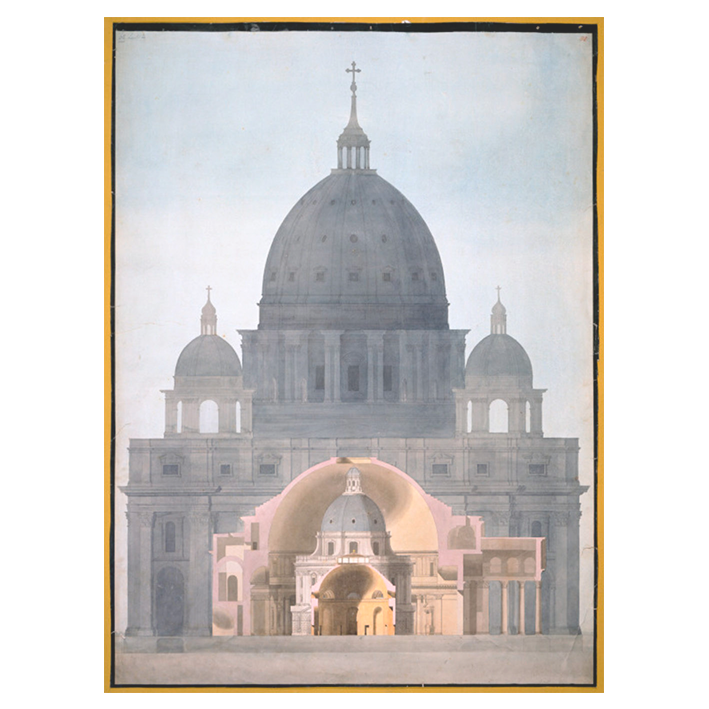

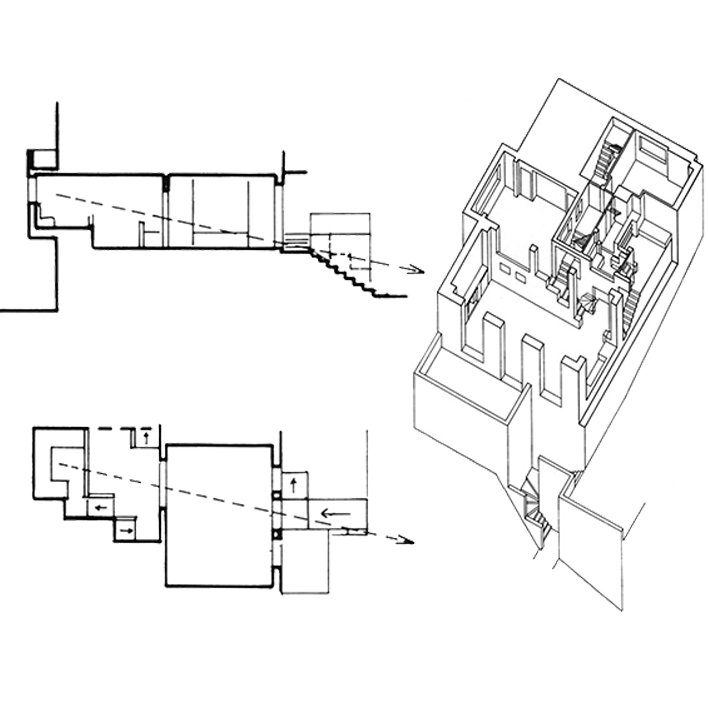
The overlapping planes in Picasso and Braque, the linear stratification observed in the work of Corbusier, Eisenman and Loos; questions the very notion of space. Space is usually endowed with an idea of pre-existing neutral condition, independent of the content, occurrences and events taking place within. “Space is discontinuous, infinitely divisible, static, and always actual. Space in short is the milieu of things, matter, identities, substances, entities that are real, comparable, and calculable”14. The supposition of this uniform space interchanging into a continuous transformation due to the emergence of a new montage (referring ‘Psycho’) instills within what Henri Bergson termed Duration. As Elizabeth Grosz talks about duration, “Duration, by contrast, is a multiplicity of succession, heterogeneity, differences in kind and qualitative differentiations. It is continuous and virtual. Duration is divisible, of course, but it is transformed through the act of division”.15 It is a successive framing of qualitative change pervading onto each other. Deleuze related duration to a process of becoming, "a change that is substance itself."16 Changes are however brought by the content or the event taking place within.
Duration is non-spatial, a single continuum of past and present forming as a whole, a conscious state. It is through this phenomenon one can access past in terms of memory. Memory is a perception of already experienced momentary units. Preliminary perception of memory suggests an ‘assemblage’ of ‘images’. Each composed of defragmented information about content and form within. The image resolution seems to be debatable, dissolved, unclear at this stage of perception, but slowly formulates pieces of information together to construct a whole. Space in this construct comes out as a dynamic juxtaposition of things subject to past events which are in turn made up of overlapped images. To say space is uniform in this transformation, is to overlook the fundamental aspect of movement. Space is not a neutral condition in which the movement occur, but rather something that is created out of movement. As Deleuze, in his book Bergsonism argues, "If things endure, or if there is duration in things, the question of space will need to be reassessed on new foundations. For space will no longer simply be a form of exteriority, a sort of screen that denatures duration, an impurity that comes to disturb the pure, a relative that is opposed to the absolute: Space itself will need to be based in things, in relations between things and between durations, to belong itself to the absolute, to have its own 'purity'."17 The network between the things contained within, the movement of objects leading up to an event, dynamically transforms the very perception of space. Space comes out as a stratification of information-undulating, fluctuating, transfusing images, like the cinematic frames. The persistence of vision forming a continuous sequence in cinema reciprocates to the notion of duration forming a prerequisite for subjective experience of space as temporal extract made up of sequential imagery. "The human experience of perception hence pivots upon a temporal lag, a superimposition of images, an inextricability of past and present."18
(conclusion)self-containment
To understand space through lived experience, consciousness of past blending into the present, the sensibility of duration, in regard to the perception of memory, is to acknowledge the sequential layering of realities. Like isolating a cinematic frame to only invent micro narratives within the general body of narrative, a spatial memory can only be investigated by seeing it in stratified sequence. Further articulation of this temporal dimension of space, demands a way of experimentally representing it. The representation however takes a two- or three-dimensional grid, if it were to situate itself in the divisible Cartesian space we know. But as Bergson says, Duration is non-spatial and thus cannot be represented. It would be then, a desperate attempt if we were to represent memory in this spatial matrix. Desperate, because of apparent circumstances- eventual loss of information, flattening of layers, suppression of depth, missing out entirely on the temporal dimension.
Seeing the technical age, we live in, perception without a technical characteristic seems impossible. Representation in terms of imagery gives a flat reading because of the digital screen. Screen is a technical device to signal data for an image. Images are fundamentally technical too. Defining what images are in the current age; John May offers a precise technical description by writing, “all imaging today is a process of detecting energy emitted by an environment and chopping it into discrete, measurable electrical charges called signals, which are stored, calculated, managed, and manipulated through various statistical methods. Images are thus the outputs of energetic processes defined by signalization.”19 There occurs a distortion in resolution through the process of signalization, which itself is fluctuating because of the non-linear past-present continuum connected by memory. Resolution is the property of images as Casetti and Somaini argues, “visualized on an orthogonal grid of picture elements or pixels, which represent continuous visual phenomena through a series of distinct, discrete elements. This in itself conditions the plasticity of digital images.”20 Resolution distortion further leads to drift in the materiality of images, leading to a temporal lag on human experiences and eventual state of self-containment. Self-Containment can be referred to a total state of isolation which occurs between the pre-overlap and post-overlap conditions, between the superimposition of images - a non-linear temporality.
Seeing the technical age, we live in, perception without a technical characteristic seems impossible. Representation in terms of imagery gives a flat reading because of the digital screen. Screen is a technical device to signal data for an image. Images are fundamentally technical too. Defining what images are in the current age; John May offers a precise technical description by writing, “all imaging today is a process of detecting energy emitted by an environment and chopping it into discrete, measurable electrical charges called signals, which are stored, calculated, managed, and manipulated through various statistical methods. Images are thus the outputs of energetic processes defined by signalization.”19 There occurs a distortion in resolution through the process of signalization, which itself is fluctuating because of the non-linear past-present continuum connected by memory. Resolution is the property of images as Casetti and Somaini argues, “visualized on an orthogonal grid of picture elements or pixels, which represent continuous visual phenomena through a series of distinct, discrete elements. This in itself conditions the plasticity of digital images.”20 Resolution distortion further leads to drift in the materiality of images, leading to a temporal lag on human experiences and eventual state of self-containment. Self-Containment can be referred to a total state of isolation which occurs between the pre-overlap and post-overlap conditions, between the superimposition of images - a non-linear temporality.
NOTES
1.
Karsten Harris, The broken frame – Third lecture, (The Catholic University of America Press, Washington D.C., pp. no. – 70)
2.
Juhanni Pallasmaa, The Architecture of Image,
(Building Information Ltd, 2001. pp. no.– 20)
3.
Juhanni Pallasmaa, The Architecture of Image,
(pp.no. target="_blank">pp.no. target="_blank">pp.no. – 20)
4.
Karsten Harris, The broken frame –Third lecture, (pp. no. – 70)
5.
Rowe & R. Slutzky, Transparency: Literal and Phenomenal, The mathematics of the ideal villa and other essays
(Cambridge, Mass., MIT Press, 1982. Pp. no. 23-24)
6.
Rowe & R. Slutzky, Transparency. (pp. no. – 33)
7.
Erwin Panofsky, Perspective as Symbolic form – Translated by Christopher S. Wood (Cambridge, MIT Press, 1991, pp.no. - 31)
8.
El Lissitzky, A. and Pangeometry, Europa Almanach of 1925
9.
El Lissitzky, A. and Pangeometry
10.
Marrikka Trotter, Stuffed: Sir John Soane’s interiors and some thoughts on scale (SCI-Arc, Offramp 15: Stuff, Spring/Summer 2018)
11.
Extract from the portion of a 1964 interview with Alfred Hitchcock from the CBC TV series "Telescope". Here, Hitchcock discusses three theories of film editing with examples, notably from his 1960 horror-thriller ‘Psycho’
12.
Sergei Eisenstein theory of Montage in Soviet Cinema, 1925
13.
Juhanni Pallasmaa, The Architecture of Image, On Rear Window
(pp.no. 130-150)
14.
Elizabeth Grosz, Architecture from the Outside, Essays on Virtual and Real Space (The MIT Press Cambridge, Massachusetts London, England, 2001, pp. no. – 114-115)
15.
Elizabeth Grosz (pp. no. – 114-115)
16.
Deleuze, Gilles. Bergsonism. (New York: Zone, 1988 37)
17.
Deleuze. Bergsonism. (pp. no - 49)
18.
Mary Ann Doane, The Emergence of Cinematic Time: Modernity, Contingency, the Archive. (Cambridge, MA: Harvard UP, 2002 pp. no. – 77)
19.
John May. Everything is already an Image (Log 40, pp. no. 12)
20.
Francesco Casetti & Antonio Somaini, Resolution: Digital materialities, thresholds of visibility (European Journal of Media Studies, 2018, pp. no. 87-89)

<preface>
The research points towards the temporality within architecture space, examined under variable aspects given the fundamental characteristics of space like transparency, framing, overlapping, interpenetration and simultaneity. Similar articulation of space will also be referenced to early Cubist paintings by Picasso and Braque triggering the very notion of depth and collapsing of geometric planes. In the later section, using cinema as a medium to understand the co-relation between space and time, the research works on the idea of divisibility of time by giving full autonomy to momentary frames. Using Hitchcock’s film as reference, the argument is situated in an attempt to examine the ‘fluctuation’ and ‘dissolution of frame’ when subject to ‘overlap’. Overlap in terms of spatial juxtaposition to perceive the formal object in architecture, art and cinema from a subjective viewpoint. By empahsizing on thr object’s frontality caused due to the suppression of depth and contraction of interstitial spaces, a further articulation on the becoming of an ‘image’ is deviced. In the last section to theorize this dissolution of overlapping frames, due to the interconnection of the above-mentioned spatial characteristics I will attempt to interchange the temporality of ‘Time’ with ‘Space’ and the uniformity of ‘Space’ to ‘Time’ by using Bergson’s model of Duration.
(introduction)an array of frames
A frame is a vital body in its physicality, in art and architecture both. In art, frame refers to something that contains the enframing. The act of beholding something within. Usually this ‘something’ has always been a puzzling dialectic between ‘content’ and ‘form’. The act of beholding also further invites the viewer for subjective interpretations. It calls for our attention to see what it represents. A frame as Karsten Harris says; “is a device that establishes aesthetic distancing.”1 This explains why the paintings are framed. Looking at a painting is like looking out of the window onto a different reality. Frame establishes an idea of a representation through its character making the pictorial art within more prominent. In other case, the physicality of frame is also dissolved by the method of creating illusion. The Rococo Church, subverts the notion of frame by inversing the relation between the framed reality and the outside world, dissolving the physicality of frame. The illusion was created to blend the pictorial aesthetics of fresco with architecture aesthetics.
In Architecture, conventionally the idea of frame would be determined by a door or a window. The character of a door or window has been arguably political throughout in the formal assessment of any spatial typology. They become transitional elements between the inside and the outside. Frame renders the confinement of the content, in case of architecture space; the social, political and economic confinement. However, even a built form, a contour, a plane or a surface, from a definite viewpoint can also be read as a frame. This frontality of built forms is more prominent in case when geometric volumes coincide behind each other. It is essentially the layering of these volumetric spaces that define the very existence of frame. Frontality also argues the contraction of depth between two adjacent geometric planes in a volumetric setting. This is evident in the work of Le Corbusier, both in his paintings and his architecture. By the act of perceiving Le Corbusier’s Villa Stein; from a single viewpoint, one can argue the overlapping of intersecting planes by means of neglecting the intermediate space. The idea of a space is perceived as intersecting through these planes in continuation.
In cinema, technically the idea of frame refers to a single module isolated in its temperament. This module is a captured moment in time by a camera lens, more like an image. Each image when examined independently opens up to arguments on the formal organizational pattern of the content within. The content within this independent frame is variable, mostly composed of events taking place in often rational spaces. As Juhanni Pallasmaa states, “there are hardly any films that do not include images of architecture.”2 this holds true if one considers framing a scene using a digital lens. The process inquires technicalities in terms of orientation, scale, lights, etc., there is already an existence of space within the frame. “The structuring of place, space, situation, scale, illumination, etc., characteristic of architecture – the framing of human existence – seeps unavoidably in every cinematic expression.“3
“Architecture is not about domesticating space,” writes Karsten Harris, “it is also a deep defense against the terror of time.”4 It is dynamic process of continuous modification of space, in time with undulating landscapes – objects and the network between them. This temporality can be better understood by examining the cinematic frame which overlaps, blends and thus adds temporality to a cinematic event. Cinematic frame is much like an autonomous image, if we were to understand space as a temporal extract, it would merely be snapshots of momentary units existing in time with frozen network of objects within. This fragments everything back to succession of images. Frame can also be referenced to the current society we live in, the image culture where the digital screens have lately taken the role of replacing all conventional art forms. It is a digital canvas bounded by a frame. The frame of a screen is not just the one which confines the extreme limit of the canvas but also draw electronic process required to simulate the screen. Due to the multiplicity of this, the human subject is also put forward to be transformed. The screen has proceeded the human body by projecting digital imagery on the body, reducing it to only an outlining frame. The role of frame previously was to bound the content by limiting the confinements. But now this projected image doesn’t confine itself withing the outline of the body (frame of the body) but surpasses onto other frames, other bodies. We are exposed to a bulk of information at any given point of time. This information in terms of data has made the canvas transparent and the frame almost invisible.
In Architecture, conventionally the idea of frame would be determined by a door or a window. The character of a door or window has been arguably political throughout in the formal assessment of any spatial typology. They become transitional elements between the inside and the outside. Frame renders the confinement of the content, in case of architecture space; the social, political and economic confinement. However, even a built form, a contour, a plane or a surface, from a definite viewpoint can also be read as a frame. This frontality of built forms is more prominent in case when geometric volumes coincide behind each other. It is essentially the layering of these volumetric spaces that define the very existence of frame. Frontality also argues the contraction of depth between two adjacent geometric planes in a volumetric setting. This is evident in the work of Le Corbusier, both in his paintings and his architecture. By the act of perceiving Le Corbusier’s Villa Stein; from a single viewpoint, one can argue the overlapping of intersecting planes by means of neglecting the intermediate space. The idea of a space is perceived as intersecting through these planes in continuation.
“Architecture is not about domesticating space,” writes Karsten Harris, “it is also a deep defense against the terror of time.”4 It is dynamic process of continuous modification of space, in time with undulating landscapes – objects and the network between them. This temporality can be better understood by examining the cinematic frame which overlaps, blends and thus adds temporality to a cinematic event. Cinematic frame is much like an autonomous image, if we were to understand space as a temporal extract, it would merely be snapshots of momentary units existing in time with frozen network of objects within. This fragments everything back to succession of images. Frame can also be referenced to the current society we live in, the image culture where the digital screens have lately taken the role of replacing all conventional art forms. It is a digital canvas bounded by a frame. The frame of a screen is not just the one which confines the extreme limit of the canvas but also draw electronic process required to simulate the screen. Due to the multiplicity of this, the human subject is also put forward to be transformed. The screen has proceeded the human body by projecting digital imagery on the body, reducing it to only an outlining frame. The role of frame previously was to bound the content by limiting the confinements. But now this projected image doesn’t confine itself withing the outline of the body (frame of the body) but surpasses onto other frames, other bodies. We are exposed to a bulk of information at any given point of time. This information in terms of data has made the canvas transparent and the frame almost invisible.
(chapter two)formal autonomy in cinema
The formulation of a cinematic sequence includes number of overlapping frames, each acting like an independent image. Each image an assemblage of context, time, information and narrative dominating the existence of corresponding object or objects depicted. The eye is the primary subject here. It is the persistence of vision that gives temporality to the overlapping frames. It makes the eye perceive the soft passage of so called ‘object’ drift between the narrative of film, situating itself in a context, sensing the linear impression of time. Breaking down the cinematic sequence into frames would entail the subjugation of the formal language within.
To understand the film, one should include in each content, the message delivered by the total autonomy of form. Elementarily the juxtaposition of imagery on a frame gives a form and the movement of a form is registered through the rapid succession of overlapping frames.
In the 1960 film, ‘Psycho’ by Hitchcock, fragmenting the bathroom murder sequence by intimidating the formal juxtaposition of imagery in each frame one could comprehend the contraction of in-between space of objects in alignment with the linear time creating a room for suspense. There were around 70 pieces of objects put together as imagery in about 45-second-long sequence as mentioned by Hitchcock in one of his interviews.11 These would include the hand, shower, parts of the torso, shadows on the curtain, curtain itself, curtain rings, mosaic tiles of the bathroom, the wide-open mouth, water trap and the eye. At an ontological level, they play a significant role in pushing the narrative forward by creating traces of existence in the already established set sequence. In summation, they act as an assembly; like the mosaic on the wall itself is an assembly, a ‘montage’. Technically, in cinema a ‘Montage’ is a series of short shot sequenced one after the other to condense space, time and information. Sergei Eisenstein laid out five methods of montage in cinema theory to introduce complexity within the scene, Metric (cut purely based on length of shot), Rhythmic (based on time and cutting of tempo with action), Tonal (lighting, shadow, form within), Over tonal (Mixture of first three, playing against each other), Intellectual (express abstract ideas).12
The temporality in cinema is supplemented by the interiority of architecture spaces adding the extra third dimension. Fundamentally, the progression of narrative in a film concludes by the overlapping of several such montages. Hitchcock introduces the element of suspense in the particular sequence by including in the possibility to observe the overlapping of two montages within the same interiority. He does it by merely inversing the objectivity of already existing curtain and phenomenally transforming into a frame of representation. The curtain now becomes a primary character, like a plane; transparent materiality, suggesting the linear stratification of montages. At this point, so much of the sequence could be an example of ‘literal transparency’. But the frame of representation within the cinematic frame opens a possibility of subjective observation. Observations on the pre-overlap and the post-overlap conditions. The eye through the translucent plane begins to register an early intervention of next sequential frame, even before this new montage starts disrupting the ongoing one. This is the pre-overlap condition which is left unnoticed by the primary object within the scene. However, the post-overlap condition is when this primary object reverses the gaze onto the emergence of new assembly of objects, leading into an interplay between montages and eventually concluding the suspense by surpassing the initial montage into a murder. The occurrences in between both the condition propound the suppression of depth by the interpenetration of forms fabricating the subjective consciousness into suspense. Such a reading would imply phenomenal transparency between stratified layer of montages. ![]() The first layer is the abstract space of complete uniformity challenged by the second layer space which emerges from processes of continual transformation.
The first layer is the abstract space of complete uniformity challenged by the second layer space which emerges from processes of continual transformation.
A similar reading of subjective observation drawing a perception of space defragmented into layers of information can also be seen in Hitchcock’s 1954 film ‘Rear Window’. The information inscribed however is through the eye of the surveyor, in this case, a fixed point of view, peeping outside the frame, onto an assembly of other window frames. The vertical surfaces, fundamentally the walls; breaks the space into independent interiorities. Frame here confines the spatial matrix of each interiority but enframes the ongoing narrative within the space. It becomes a frame of representation standing before the fixed POV projecting subjective observation. These observations are seen like a silent theatre as the noise is dissolved by the distance between the frontal of the other side. Devices like window glass, camera, lens, binoculars, etc. also works towards further suppression of depth and shrinkage of space. The distance is not only felt from the other side of the courtyard but also in omnipresent between each household, between each frame. The frontality of the distributed frames, each filled with information only creates an impressionist existence of elongated space in the backdrop, stirring up a pool of curiosities, investigating for more information. “The task of architecture, as a resonator or amplifier of mental impact, is clearly seen here in the cinematic architecture of Alfred Hitchcock.”13


*A fixed point of view through the frame of window looking onto the other side of courtyard, onto the horizontally distributed frames of representations.
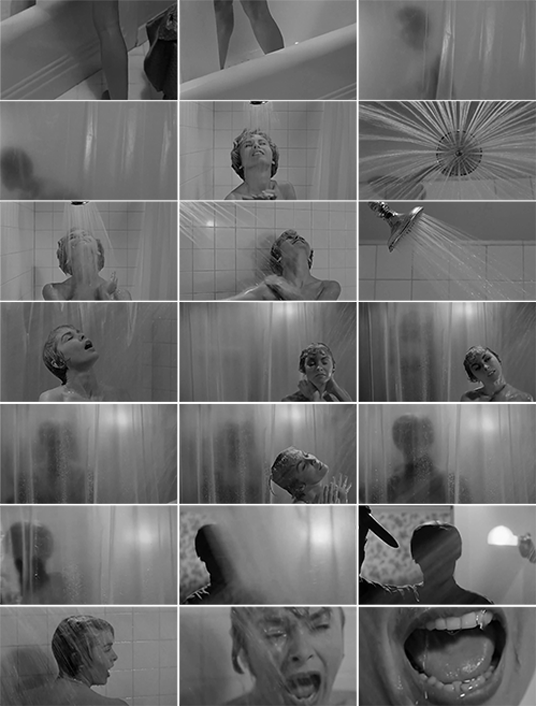
*Defragmented montages from the bathroom murder sequence in Hitchcock’s ‘Psycho’, depicting the pre-overlap and postoverlap conditions.


